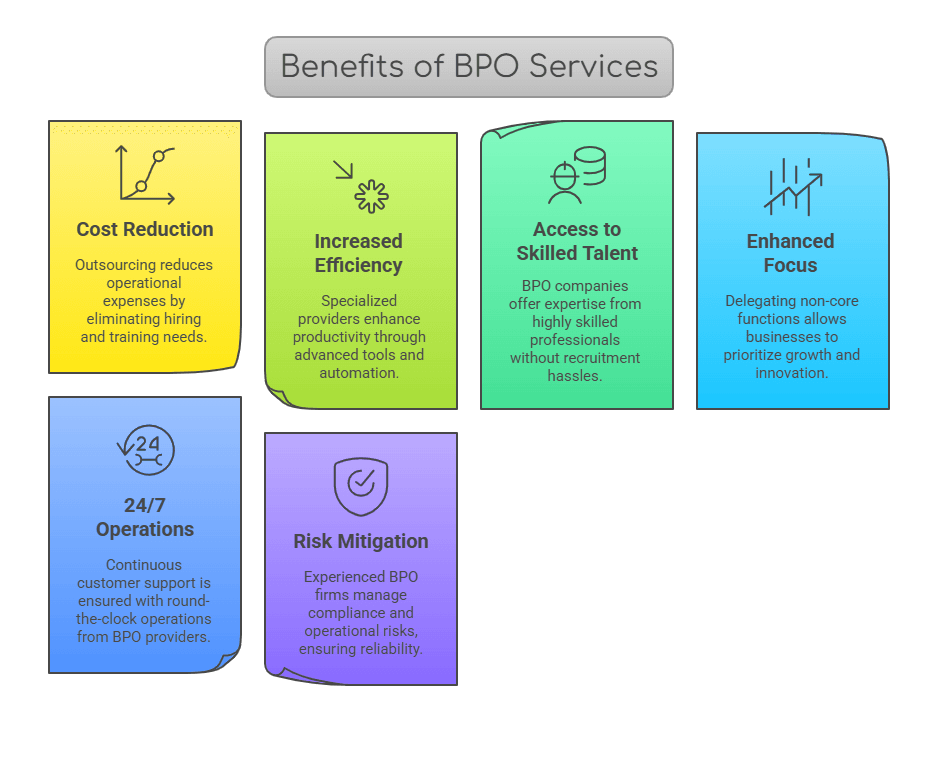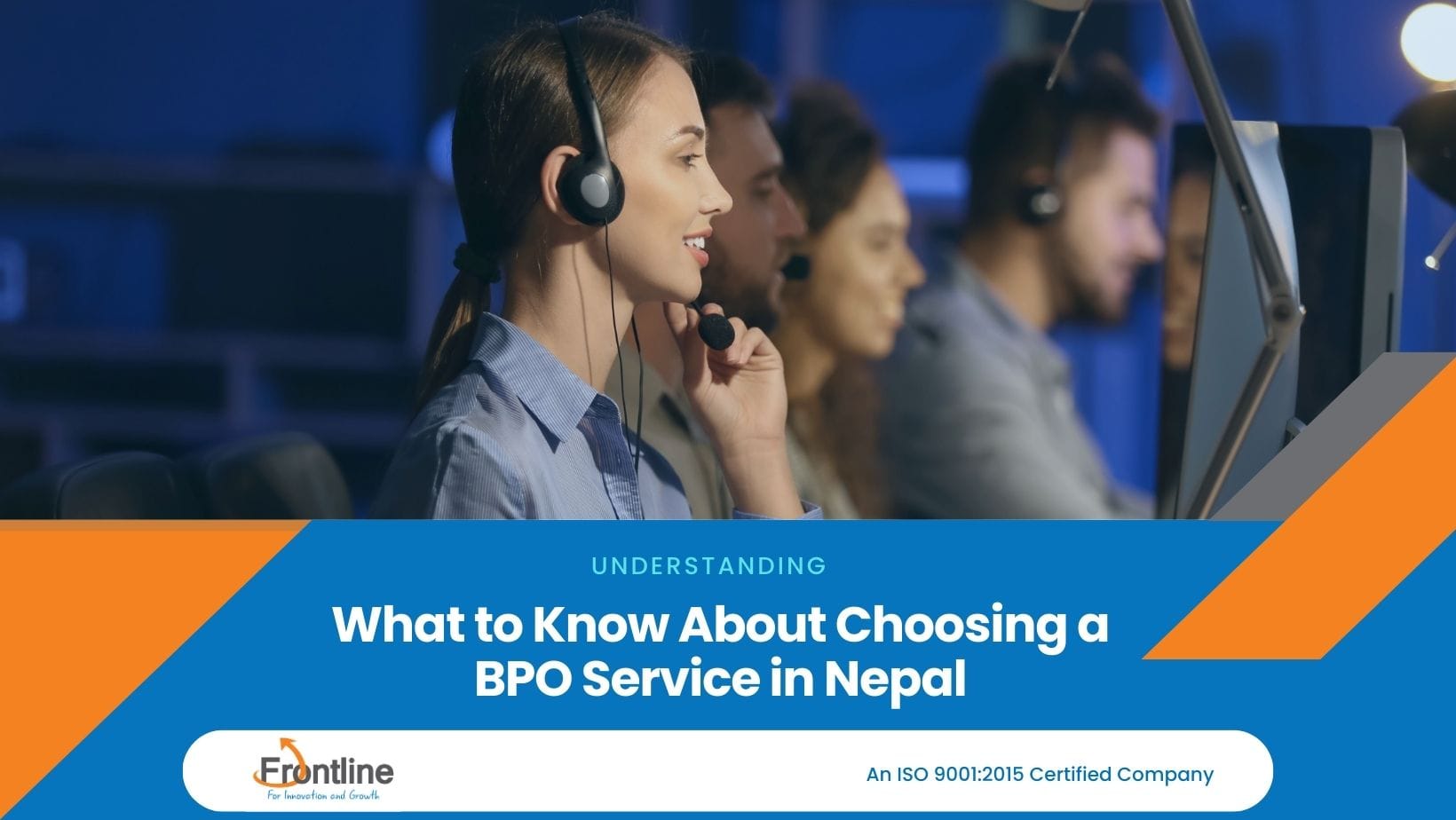Understanding BPO Services
Business Process Outsourcing (BPO) refers to the practice of contracting specific business tasks to third-party service providers. These services range from customer support, payroll processing, IT services, human resource management, finance and accounting, and more. Companies opt for BPO to enhance efficiency, reduce costs, and focus on core business functions.
Table of Contents
Types of BPO Services
1. Front-Office BPO
Front-office BPO service in Nepal deal with customer-facing tasks, such as:
- Customer service and support
- Sales and marketing
- Technical support
- Help desk services
2. Back-Office BPO
Back-office BPO focuses on internal business processes, including:
- Payroll processing
- HR administration
- Data entry and management
- Finance and accounting
3. Offshore, Nearshore, and Onshore BPO
Depending on the location, BPO services are classified as:
- Offshore BPO – Services provided from a distant country (e.g., U.S. companies outsourcing to India or the Philippines)
- Nearshore BPO – Services outsourced to nearby countries (e.g., U.S. outsourcing to Mexico)
- Onshore BPO – Services within the same country
Key Factors to Consider When Choosing a BPO Service in Nepal
1. Industry Expertise
A reputable BPO provider should have expertise in your industry. Whether you’re in healthcare, finance, retail, or IT, the provider must understand the unique challenges and regulations of your sector.
2. Cost Efficiency
One of the primary reasons businesses outsource is cost savings. Compare pricing models, including per-hour, per-project, or subscription-based costs. Ensure the service provider delivers high value without compromising quality.
3. Technology and Infrastructure
The BPO partner should have state-of-the-art technology and infrastructure. Factors to evaluate include:
- Cloud computing capabilities
- Data security measures
- Automation and AI integration
- Scalability of services
4. Data Security and Compliance
Outsourcing often involves handling sensitive data. Verify that the BPO provider follows industry-specific compliance standards such as:
- GDPR (General Data Protection Regulation)
- ISO 27001 (Information Security Management System)
5. Service Level Agreements (SLAs)
Clearly defined SLAs outline the expectations and performance benchmarks. Key SLA components include:
- Turnaround time
- Quality assurance metrics
- Response and resolution times
- Data protection policies
6. Scalability and Flexibility
A good BPO service should be scalable to accommodate business growth. Look for providers that can expand their operations as your business needs change.
7. Performance Metrics and Reporting
Regular monitoring of KPIs (Key Performance Indicators) ensures that the outsourcing service meets business goals. Common KPIs include:
- First-call resolution (FCR) rate
- Customer satisfaction score (CSAT)
- Accuracy rate in data processing
- Average response time

How to Successfully Transition to a BPO Model
1. Identify the Right Processes for Outsourcing
Start with non-core functions that consume time and resources but do not directly impact customer experience.
2. Choose the Right BPO Partner
Conduct a detailed vendor assessment, check client testimonials, and request case studies to evaluate the BPO provider.
3. Develop a Transition Plan
Create a step-by-step implementation roadmap, including onboarding, training, and performance evaluations.
4. Monitor and Optimize Performance
Regularly track performance using KPI dashboards and periodic review meetings to ensure business objectives are met.
Final Thoughts
Choosing the right BPO service can significantly enhance efficiency, reduce costs, and drive business growth. By evaluating factors like industry expertise, security measures, technology adoption, and scalability, businesses can make informed outsourcing decisions that align with their strategic goals.
23 views






